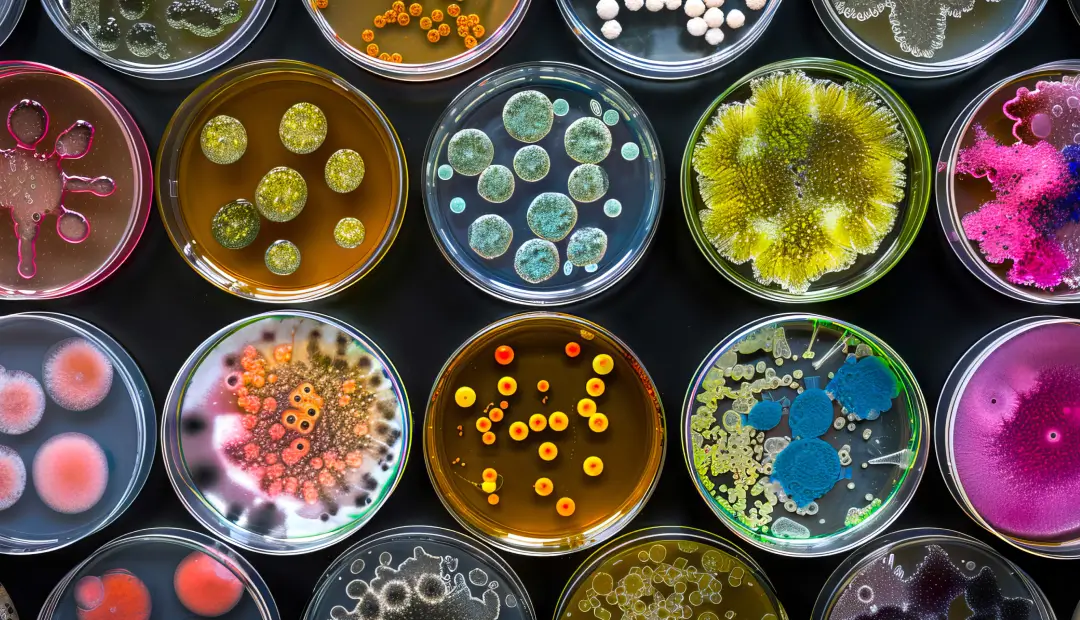Muslim consumers often ask whether bacterial cultures make a food halal (permissible) or not. In general, Islamic experts and halal authorities consider bacterial cultures permissible as long as no haram (forbidden) components are involved.
This explainer will break down:
- What are bacterial foods
- Why ask if bacterial cultures are halal
- How bacterial cultures are sourced and grown
- Practical halal certification considerations
What Are Bacterial Cultures in Food?
Bacterial cultures are beneficial bacteria used to ferment or transform ingredients in food processing. They play a key role in many foods, especially dairy products like cheese and yogurt.
In principle, bacteria as microscopic living beings are neither meat nor intoxicant, so they are not inherently impure or forbidden. They play a key role in many foods, especially dairy products like cheese and yogurt.
For example, yogurt is made by adding live Lactobacillus and Streptococcus bacteria to milk, which ferment the lactose (milk sugar) into lactic acid, giving yogurt its tangy taste and thick texture. In cheesemaking, specific bacteria (starter cultures) are added to milk to begin acidification, which helps enzymes like rennet form curd.
Why Ask If Bacterial Cultures Are Halal?
The question arises because bacterial cultures are cultivated using growth media nutrient-rich solutions or gels that may contain animal-derived ingredients. If those ingredients are from non-halal sources (for example, pork-based gelatine or beef extracts from animals not slaughtered Islamically), this could pose a halal issue.
Key factors to consider for consumers include:
- Growth Medium Ingredients: Bacteria need proteins, sugars, and vitamins to grow. Some standard lab media use peptones (protein digests) from animal sources or even blood-based agars. For instance, tryptic soy broth is traditionally made by digesting milk casein with porcine (pig) trypsin, meaning it contains pig-derived components.
- Source of Bacterial Strains: The bacteria themselves might originally be isolated from various sources – potentially even animals or the human body. Common food cultures often come from halal sources (milk, plants, or the environment), but hypothetically a strain could be isolated from a non-halal animal.
- Carryover of Impurities: At the certification level, products derived from cultures or microorganisms fed with non-halal nutrients (e.g., gelatin, blood, or other haram substances) would not be accepted as halal.
In summary, bacterial cultures per se are not meat or wine that could be haram; the concern is about any haram ingredients used in cultivating or handling them.
How Bacterial Cultures Are Sourced and Grown
| Growth Medium Type | Description & Examples | Halal Considerations |
| Animal-based Medium | Nutrients from animal origin. For example, broths made from beef extract, casein (milk protein) digests, or blood agar (which uses animal blood). | Acceptable only if the animal ingredients are from halal-slaughtered sources and contain no inherently haram parts (like blood or pork). |
| Plant-based Medium | Nutrients derived from plants or microbes. Examples: soy peptone, yeast extract, molasses, potato or carrot broth. | Generally halal as long as they are not mixed with any hidden haram additives. |
| Synthetic (Defined) Medium | Chemically defined ingredients (amino acids, minerals, sugars) produced in a lab. Example: a mixture of glucose, salts, and vitamins where every component is known. | Halal-suitable, since components are usually chemical substances not derived from animals. Still, each ingredient should be checked (e.g. some vitamins or amino acids could be sourced from animal materials). Halal certification is highly recommended. |
Practical Takeaways
For Consumers: If a bacterial culture product is halal-certified, it means the certifier verified tiny details like the culture media and it is suitable for consumers. If not certified, you can use the ingredient list and some general rules of thumb: for example, “microbial enzymes” or “bacterial cultures” on a label are positive signs (they imply no animal rennet was used).
For Food Scientists/Manufacturers: Incorporating halal guidelines for bacterial cultures is feasible and increasingly standard. Use plant-based or certified media, document your inputs, and you’ll not only make your product acceptable to Muslims but also possibly improve its market appeal (many non-Muslim consumers also appreciate the “no animal ingredients”.
To learn more regarding the halal certification requirements, process, and approved vendors, get in touch with an AHF expert via info@halalfoundation.org.
Sources
The information above is drawn from Islamic scholarly rulings and halal standards, including:
- legal rulings on live cultures
- guidelines from halal certification bodies such as American Halal Foundation and Canadian Halal Bureau
- guidance from Islamic Dietary Concepts & Practices by Mohammad Mazhar Hussaini
- scientific discussions on halal microbiology.
Azmi is a dynamic content and client development professional at the American Halal Foundation, blending his passion for the halal lifestyle, history, and travel with sharp market insights. Known for his attention to detail and strategic approach, he crafts impactful content that drives engagement and strengthens AHF’s connection with global audiences.




